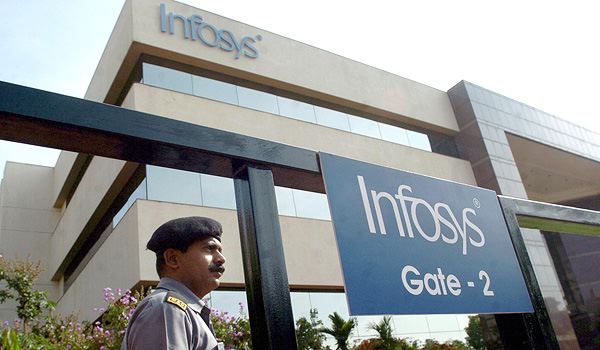Infoscions, did we actually realize that Infosys, more commonly referred as IT giant in India, is a prime “Economic backbone of India” and has a veto power to move the government.
Infoscions contribute about 8.36% to the GDP of the country and 8.89% to the total tax kitty of the Indian government however this contribution is considering the cyclic effect of Infoscions spending on real estate needs and respective impact on entire GDP and tax collection as explained below. Infoscions along with their families and friends form a huge and intelligent voting block controlling around 0.55% of the country’s votes. Goes without saying, India’s biggest political elections are won or lost by a shift of 1% of the total votes.

Image Credit : Businessweek
Infoscions have emerged as the new age ‘Influencers,’ playing a dominant role in the social, economic, cultural and political life of the country.
Read along for a systematic, non-exaggerated, and a clear demonstration of how Infoscions (as the Infosys employees are known) are a part of India’s growth story by all means. Also become a part of the conversation on How Infosys is contributing to India’s growth.
Contribution to India’s GDP
Infosys, an enterprise of approx. 122,468 employees, contribute 8.36% to the total GDP of India. This has been scientifically calculated as follows in terms of the real estate sector.
How does the real estate sector contribute to the entire GDP? The holistic view to understand the impact of the money flow on the GDP is to break the economic chain and see the direct and indirect contribution of the employees to the entire GDP. The best practice is to “cut” the economic cycle of the Indian economy and segregate the money contributed by the real estate industry. This can be done in two ways.
Direct contribution to GDP: This is about 5%, if we go by the economics stats. This indicates that out of the total country’s turnover, 5% is the real estate turnover.
Indirect contribution to the GDP: This is where the main catch is. The real estate money goes to multiple outlets and circulates multiple times- for e.g.
- Money being paid to the financial institutions for loan, goes out to add to the financial institution’s contribution to GDP
- Money invested in construction, steel, cement, etc. gets further added to the respective industry’s contribution to GDP.
- Money being paid out as wages is further spent on consumer goods, which becomes a part of the consumer industry’s contribution to GDP.
- Then there is a cyclic multiplier impact of every chain further spending the same thereby giving a multiple 20 times assuming 5% is the contribution of real estate to GDP.
Thereby, if an Infoscion requires 100 sq ft as his commercial space, valued at Rs.4000 per square feet, on an average, in today’s pan Indian market; and another 500 sq ft for his residential requirements valued at Rs.3500 per sq ft on an average on shared basis, then the total contribution of an individual employee to the real estate is Rs.21.5 lacs and together all Infosys employees contribute 26.3K crore directly to real estate.
To estimate the above cyclic effect, if Infosys’ direct contribution to real estate is 26.3K crores, which is 5% of the GDP, then its indirect contribution to the entire GDP considering the above multiplier effect of twenty times can be calculated as 5.26 lacs crores.
The amount is huge and the calculation cannot be challenged. It’s just that we are seeing for the first time a dissected view of the economic cycle, which makes us realize that we are really playing a major role in the growth of our country. This also describes why a slowdown in the IT market had shaken the Indian economy to a great extent.
Though the contribution of IT or real estate individually is not much to the GDP, but their indirect contribution is way higher and that makes Infoscions proud as they are one of the biggest contributors to the Indian GDP.
Infoscions contribution to the National Vote Bank
Infosys controls 0.55% of the voting rights including its own employees and their relatives. This can influence the entire polling scenario as it goes without saying- India’s biggest political elections are won or lost by a shift of 1% of the total votes.
This is again calculated systematically as follows.
Considering an average employee family size of five and about 20 kith and kin who can be influenced by an Infoscions in terms of their voting decision, 122,468 Infoscions nearly influence 30.6 lac voters which is 0.55% of the total vote bank (56 crores>).
In the year 1998, the voting shift of 0.8% effected a change in the government. Similarly, in the year 2004, a less than one percent of voting shift changed the fate of the Congress that was the party in power.
Infoscions, “Jaago re”- we have a veto power; it’s time to execute in favor of the larger cause.
Direct and Indirect contribution to India’s treasury
The direct and indirect taxes are calculated in the form of income tax, excise, service tax, professional tax, etc. An employee’s aggregate contribution to the India’s tax collection can be worked out by taking a top down approach; considering his contribution to the GDP and reversely work out the tax to GDP ratio which is 13%, in India.
The total employees thereby contribute 68.4K crore to India’s tax money, which is 9% of the total tax money (Rs.7.7 lacs crores) collected from direct and indirect taxes. Do we Infoscions realize that the money, that is being misused at times due to the corruption in the political system, we are the ones sourcing it big time?
The above scenario clearly explains as to how the Infoscions are contributing to the Indian economy and politics of the country. We are the money generators, dear Infoscions! We should ideally stand strong to the cause of the money being inappropriately used by our politicians- because we are providing it- it’s our hard earned money- directly or indirectly. Let our hard earned money not be wasted away to meet the interest of only few in the society!
Infoscions, if you agree and/or disagree that Infosys has a bigger role to India’s growing story- write your views on Facebook – How Infosys is contributing to India’s growth.
This guest article is written by Aditya. He is actually quite shy about writing about himself. Actually he has nothing worthy enough to write; so shy may be an excuse. He blogs at Ityaadi. If you wish to write for us, kindly check this.










Yes all IT companies are contributing to India’s growth story. That’s why IT has become the most profitable export from India.
0.01 % (122,468 employees) of the population in a country of nearly 1.21 billions generating nearly 8.36% of our nation GDP may be a matter of pride to infosys but if we take the perspective of a nation economy it reveals the lack of growth and development in other sectors and areas.
IT companies are no doubt the driving force of the country…that too with the high job opportunities that they provide…nice post..:)
infosys has always been the best, not only in terms of IT sector but providing personal and economical help too…
@Riya – Yes all IT companies are contributing to India's growth story. That's why IT has become the most profitable export from India. However, Infosys continues to have a special place.
@Machbio – The data has been well verified.
you should consider verifying facts before posting…
" …8.89% to the total tax kitty of the Indian government.." I say Bulllshit… 🙂
I think all IT companies are contributing towards the growth of India.